Fishes
Media
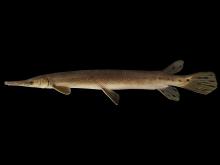
Species Types
Scientific Name
Lepisosteus platostomus
Description
The shortnose gar is named for its relatively short, broad snout. Like other gars, it's a long, cylindrical fish with a long snout and numerous prominent teeth. The body is covered with hard, diamond-shaped scales.
Media
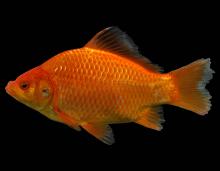
Species Types
Scientific Name
Carassius auratus
Description
Goldfish are not native to North America. They often escape into the wild from bait buckets and other causes, but there are few self-sustaining populations in Missouri.
Media

Species Types
Scientific Name
Cyprinus carpio
Description
The common carp is a "whopper" member of the minnow family. Originally from Asia, it was actively stocked in America in the 1800s and was firmly established in Missouri by 1895.
Media

Species Types
Scientific Name
Pomoxis annularis
Description
The white crappie, a popular panfish, has silver sides with 5 to 10 often faint vertical bars. The upper jaw reaches past the middle of the eye. It is more abundant and widespread than the black crappie.
Media
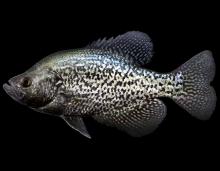
Species Types
Scientific Name
Pomoxis nigromaculatus
Description
The black crappie is a popular panfish. It is deep bodied and slab sided. The sides are silver with an irregular pattern of dark speckles. The upper jaw is long, reaching past the middle of the eye.
Media
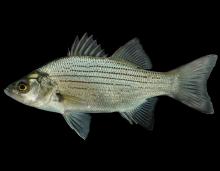
Species Types
Scientific Name
Morone chrysops
Description
The white bass is one of the most important game fish in Missouri’s large impoundments. It inhabits the deeper pools of streams and the open water of lakes and reservoirs.
Media

Species Types
Scientific Name
Lepisosteus osseus
Description
The longnose gar has a longer, narrower snout than our other three gars and is the most widely distributed gar in Missouri.
Media

Species Types
Scientific Name
Sander vitreus
Description
MDC has been stocking walleye, a popular game fish, in lakes and reservoirs including Stockton, Lake of the Ozarks, Bull Shoals, and numerous other reservoirs.
Media
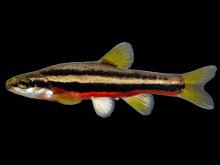
Species Types
Scientific Name
Notropis, Cyprinella, Hybognathus, Luxilus, and others
Description
Minnows — including shiners, chubs, stonerollers, dace, and carp — are members of the minnow family, the Cyprinidae. It is the largest of all fish families, and Missouri has about 70 species.
Media
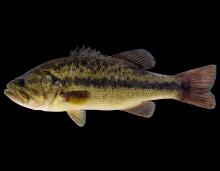
Species Types
Scientific Name
Micropterous salmoides
Description
The largemouth bass is a large, slender, elongated, streamlined sunfish with a very large mouth. It thrives in warm, moderately clear waters with little or no current. It occurs statewide in lowland lakes, artificial impoundments of all sizes, permanent pools of streams, and quiet backwaters of large rivers.
See Also


Media

Species Types
Scientific Name
Amphiuma tridactylum
Description
The three-toed amphiuma is an eel-like, completely aquatic salamander. It has very small forelimbs and hind limbs, each with three tiny toes. In Missouri it’s found only in the Bootheel region.
Media

Species Types
Scientific Name
Siren intermedia nettingi
Description
The western lesser siren is an eel-like, aquatic salamander with external gills, small eyes, small forelimbs with four toes, and no hind limbs. In Missouri, it’s found mostly in the Bootheel and northward in counties near the Mississippi River.
About Fishes in Missouri
Missouri has more than 200 kinds of fish, more than are found in most neighboring states. Fishes live in water, breathe with gills, and have fins instead of legs. Most are covered with scales. Most fish in Missouri “look” like fish and could never be confused with anything else. True, lampreys and eels have snakelike bodies — but they also have fins and smooth, slimy skin, which snakes do not.





















